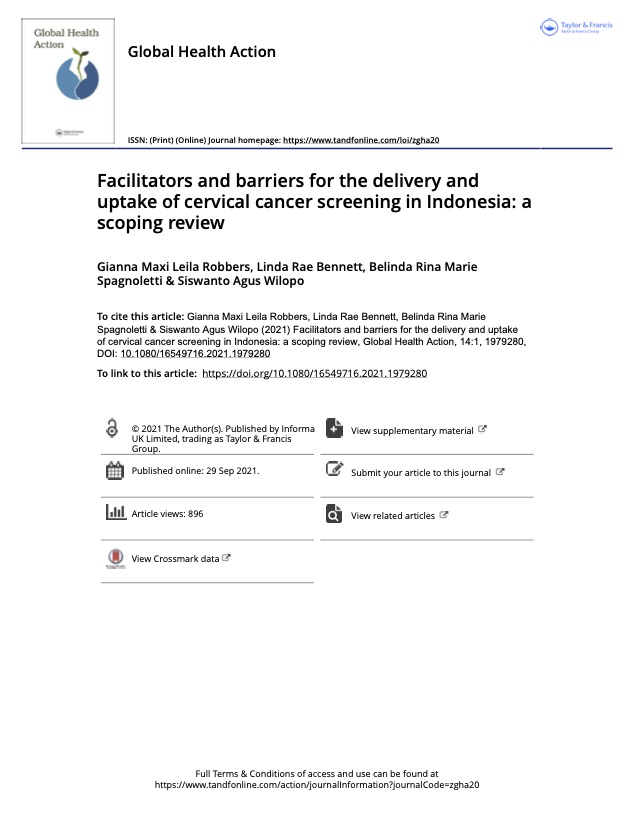
Gianna Maxi Leila Robbers, Linda Rae Bennett, Belinda Rina Marie Spagnoletti & Siswanto Agus Wilopo
Facilitators and barriers for the delivery and uptake of cervical cancer screening in Indonesia: a scoping review
- JURNAL
Background: Cervical cancer (CC) is the second most common female cancer. In Indonesia, national CC screening coverage is low at 12%, highlighting the need to investigate facilitators and barriers to screening. Objective: This review synthesises research on facilitators and barriers to the delivery and uptake of CC screening; analyses them in terms of supply- and demand-side factors and their interconnectedness; and proposes recommendations for further research. Methods: Medline Ovid, CINAHL, Global Health, Neliti, SINTA and Google Scholar were searched, applying a search string with keywords relevant to screening, CC and Indonesia. In total 34 records were included, all were publications on CC screening in Indonesia (2000- 2020) in English or Indonesian. Records were analysed to identify findings relevant to the categories of barriers and facilitators, supply-and demand-side factors. Results: Demand-side facilitators identified included: husband, family or social/peer support (14 studies); information availability, knowledge and awareness (12 studies); positive attitudes and strong perception of screening benefit and the seriousness of CC (12 studies); higher education and socioeconomic status (11 studies); having health insurance; and short distance to screening services (4 studies). Evidence on supply-side was limited. Supply-side facilitators included counselling and support (6 studies), and ease of access (6 studies). Demand-side barriers identified focused on: lack of knowledge/awareness and lack of confidence in screening (14 studies); fear, fatalism and shame (10 studies); time and transportation constraints (8 studies); and lack of husband approval and support (6 studies). Supply-side barriers included: lack of skilled screening providers (3 studies); lack of advocacy and health promotion (3 studies); resource constraints (3 studies); and lack of supervision and support for health care providers (3 studies). Conclusions: Facilitators and barriers were mirrored in the supply- and demand-side findings. The geographical scope and population diversity of existing research is limited and further supply-side research is urgently needed.

